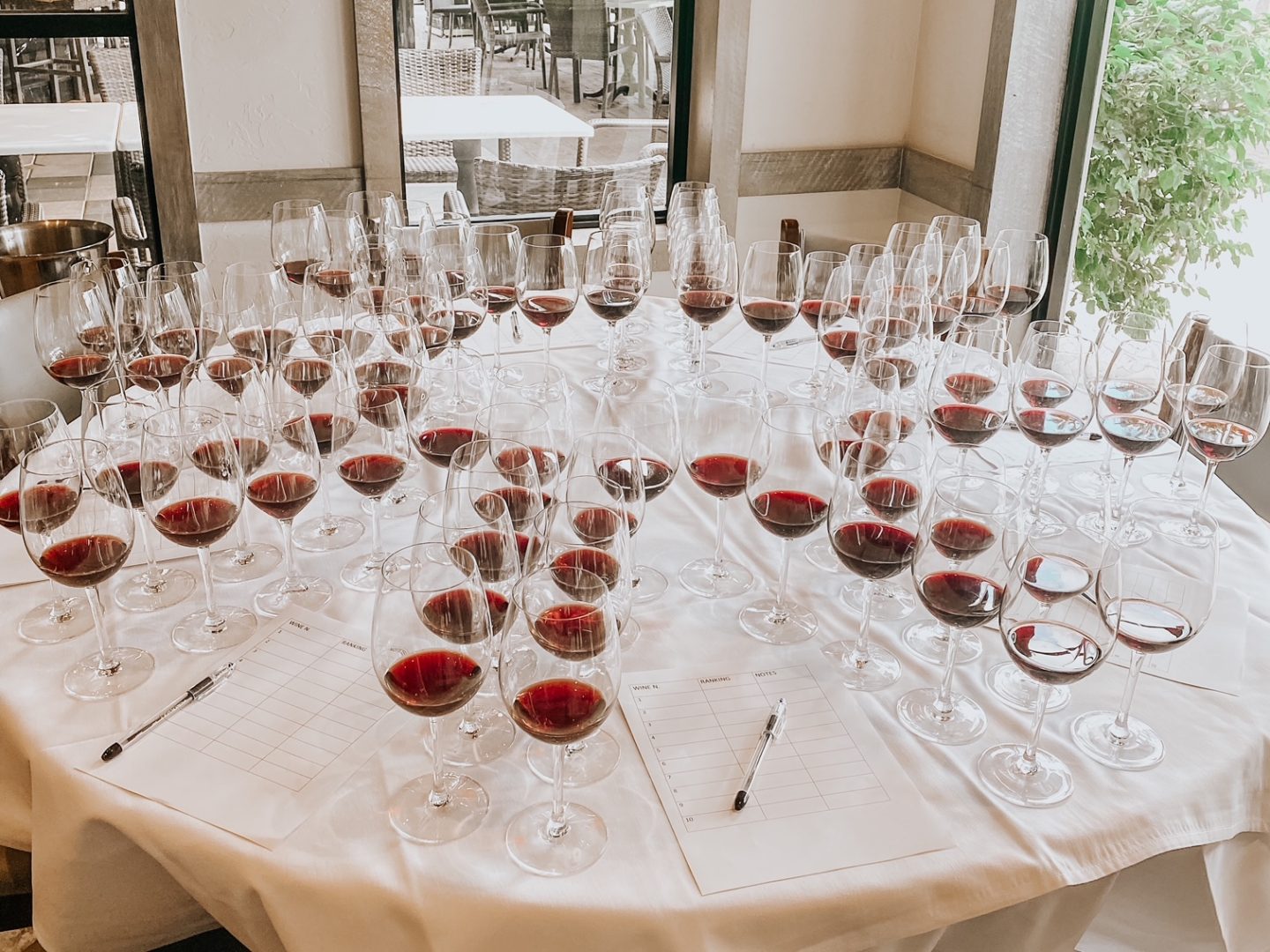
…or, Pinot Nero beats Burgundy.
In the Cellar Series, we bring you reports of tastings of fine and rare wine. This one includes Rinaldi Brunate 2018 and some Pinot Neros that exceeded expectations. While our other articles focus on bottles that you can find in South Florida retail stores, some of these might be a little trickier to locate, but we hope the insights are enjoyable.
What is the collective noun for glasses of Pinot Noir? You have a pack of wolves, a swarm of bees, and a pride of lions. For grapes it’s bunches, but once they’re put into bottles, they lose their special word. I quite like the collective noun for ships: a fleet. Formal, drifting, elegant. That suits Pinot.
So, it was Saturday morning and I found myself staring at a fleet of Pinot Noir glasses. Precisely 80 of them. Another box of bottles sat next to the table waiting for its turn to be opened and shared among just eight tasters. It was supposed to be an informal lunch, but you know what wine people are like: we get carried away.
Ten of the glasses were mine. The unexpected task ahead was to rank them – blind – in order of preference. This exercise was the brainchild of Dominic Nocerino, founder of specialist Italian importer Vinifera Imports. I suspected that he might be seeking to make a point, with all these Pinots, and that it might be about Pinot Nero.
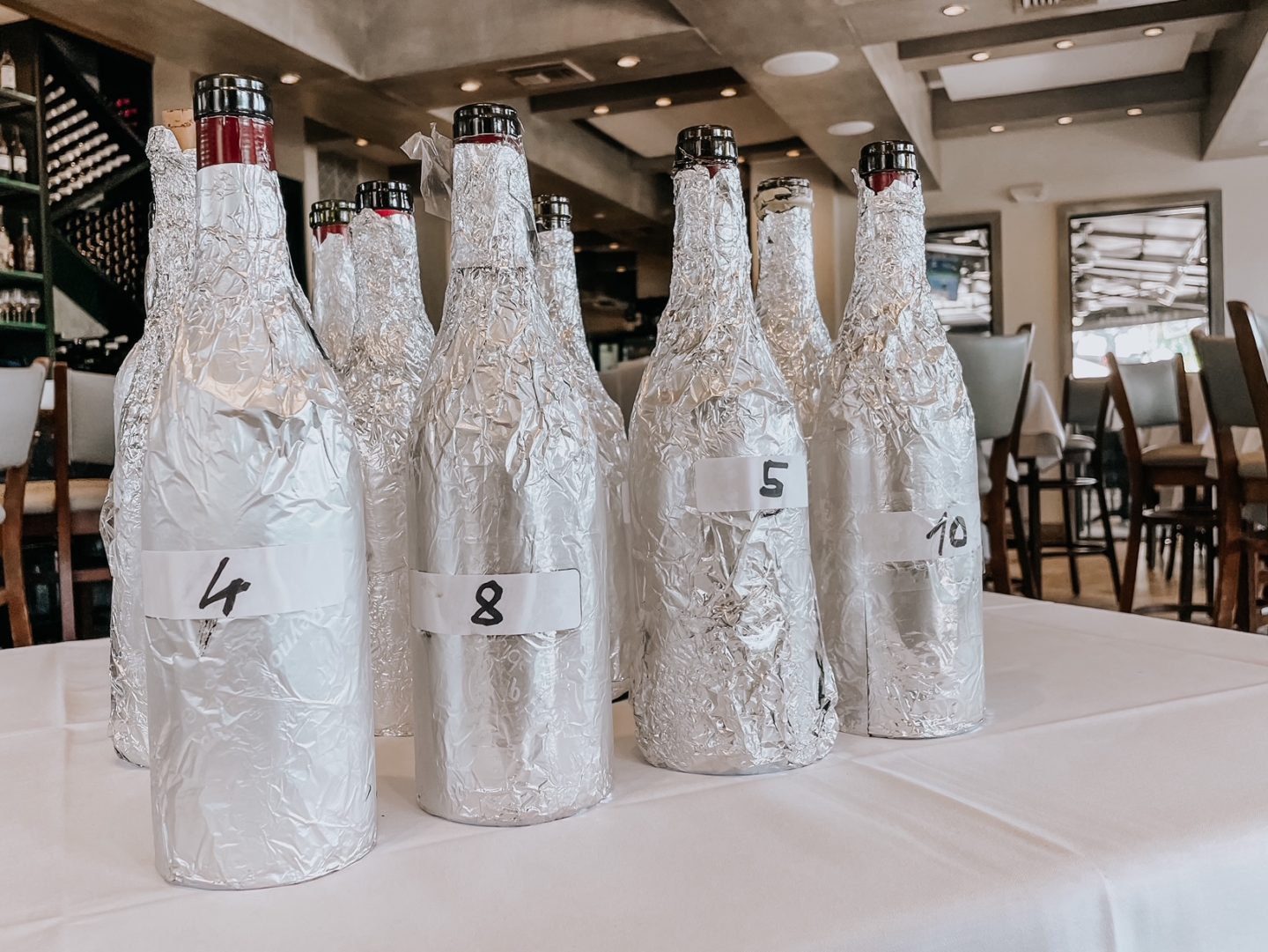
On comparative tastings…
Comparative tastings have long been used to prove the merits of less appreciated regions and styles. The Judgment of Paris famously saw wines from Napa beat their French counterparts back in 1976, when few believed that wines from the New World could match the Old in quality. More recently, English Sparkling Wines have been successfully pitched against Champagne.
With all the wines served blind, and tasters given the freedom to award points as they wish, they have the potential to go badly wrong for anyone wishing to deliver a point about their favorite wine styles. Holding a tasting like this is a bold move.
So let’s have a look at the results. I’ve listed them in terms of the group’s overall average ranking and added my own ranking for reference. (Apparently I can’t count, as I put two wines in 4th place and nothing in 5th, so let’s call it joint.)
Most prices are average Wine Searcher prices, which can be a bit wonky but are a useful approximate guide. Approximate prices for Vistarino wines were supplied by Vinifera for vintages currently available.
And the winner is…
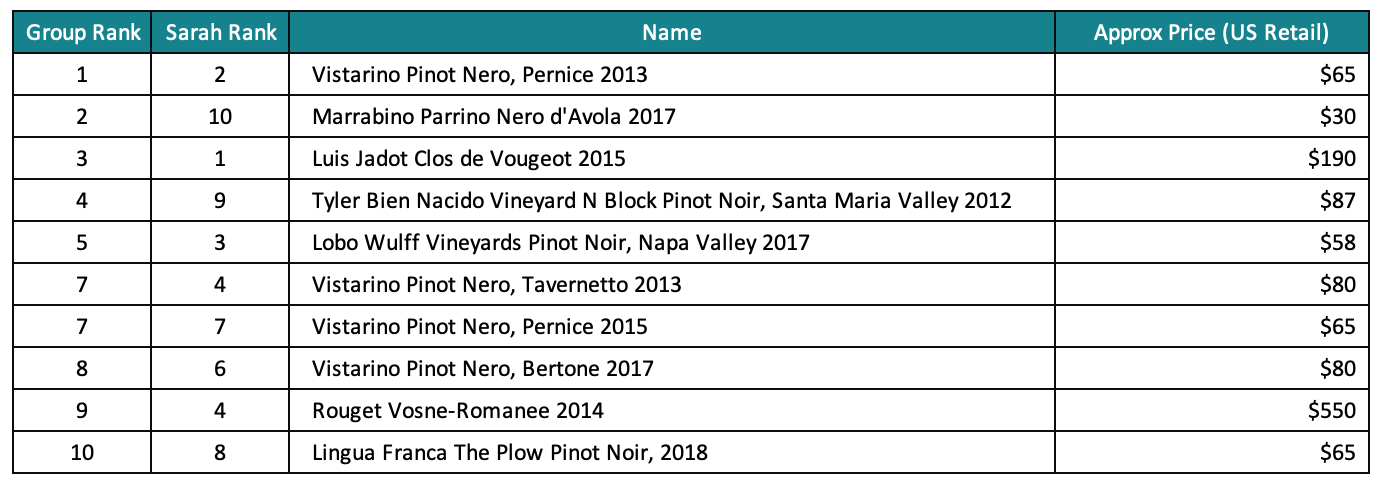
Dominic’s gamble paid off. The winning wine – beating two very good Burgundies and some notable Americans – was indeed one of Vinifera’s Italian Pinot Neros from Conte Vistarino, the Pernice Cru 2013. (I noticed Dominic grin as the results were revealed.)
Conte Vistarino is a family-owned Pinot Nero specialist from Oltrepo Pavese in Lombardy, Northern Italy. It’s about 30 miles direct south of Milan as the crow flies. Or, if you prefer, two hours west of Barolo.
The family-owned estate focuses on producing Pinot Neros that express various vineyards within the region, notably Pernice, Bertone, and Tavernetto. It also produces a range of sparkling wines.
According to my notes, the overall winner – Pernice 2013 – was impressive for its intense yet fresh red fruit, zesty aromatics and powerful yet soft tannins. I did not detect nearly a decade of age; this was fresh. Interestingly, there was consensus around the table about the high quality of this wine and all tasters ranked it highly.
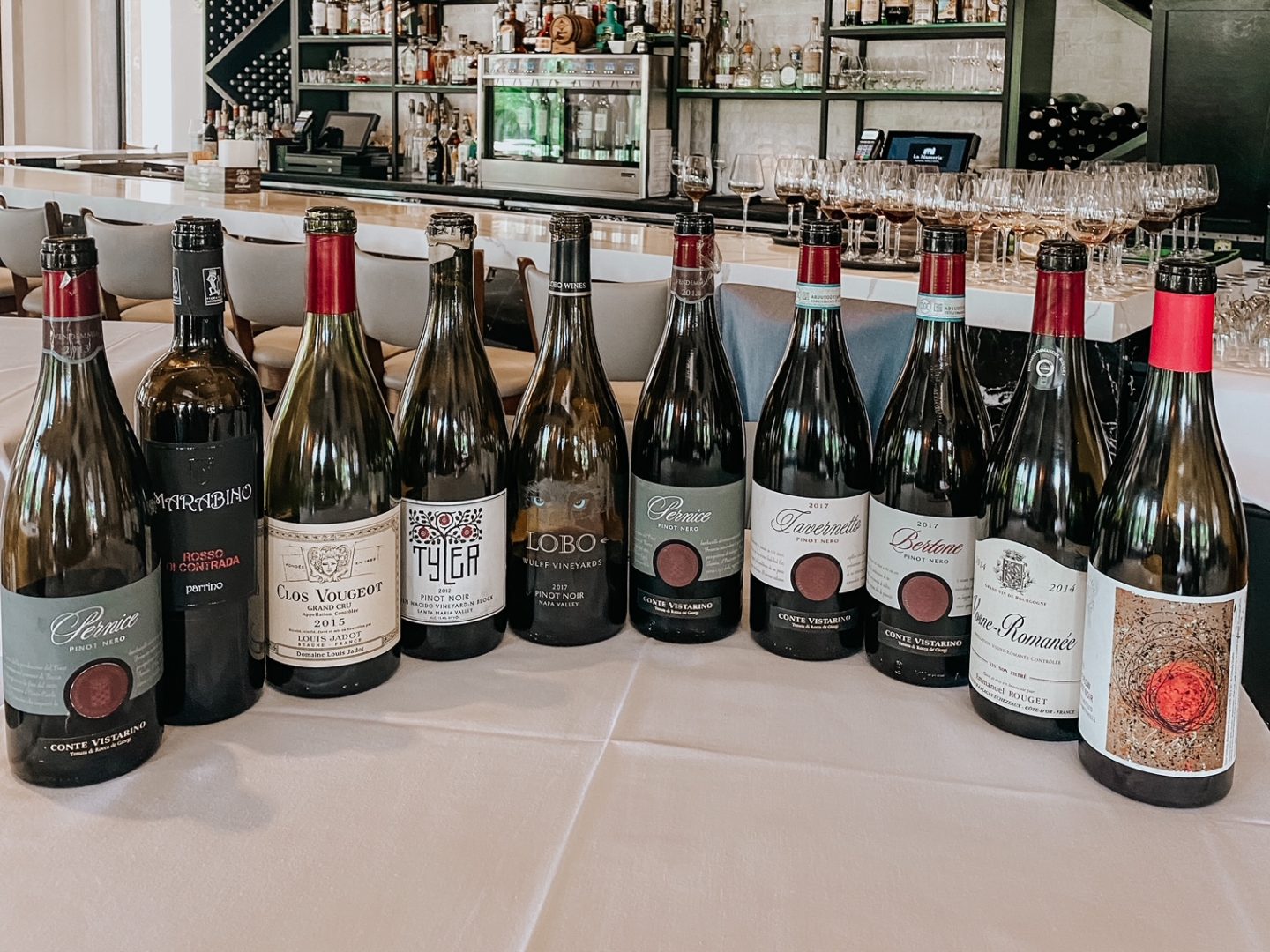
More notable wines
My top-ranking wine was the Jadot Clos de Vougeot (Burgundy Grand Cru), but to be honest, it was a very close call: The Vistarino Pernice was excellent. I often find Vougeot a little wild. The Jadot was clean and polished.
Perhaps the biggest surprise in my own rankings was the appearance of a Napa Pinot Noir in third place. These can sometimes be a little jammy, but my notes on Lobo Wulff’s efforts suggest that it was fragrant and fresh, with herbal and minty notes and fine tannins. Essentially, it didn’t read as Napa and I actually suspected that it might be Italian. How wrong I was. It’s a producer that I’ll need to revisit.
A further surprise was the low overall ranking of Rouget’s Vosne-Romanee, which might have been because it was on the delicate side: I had privately guessed that it was from Beaune. Delicate wines often underperform in blind tastings. Or perhaps we can put this down to the unpredictable nature of Burgundy…
There was, finally, an interloper in the line-up: A Nero d’Avola costing just $30 retail. This was ranked highly by the group, but my own ratings revealed a preference for Pinot Nero.
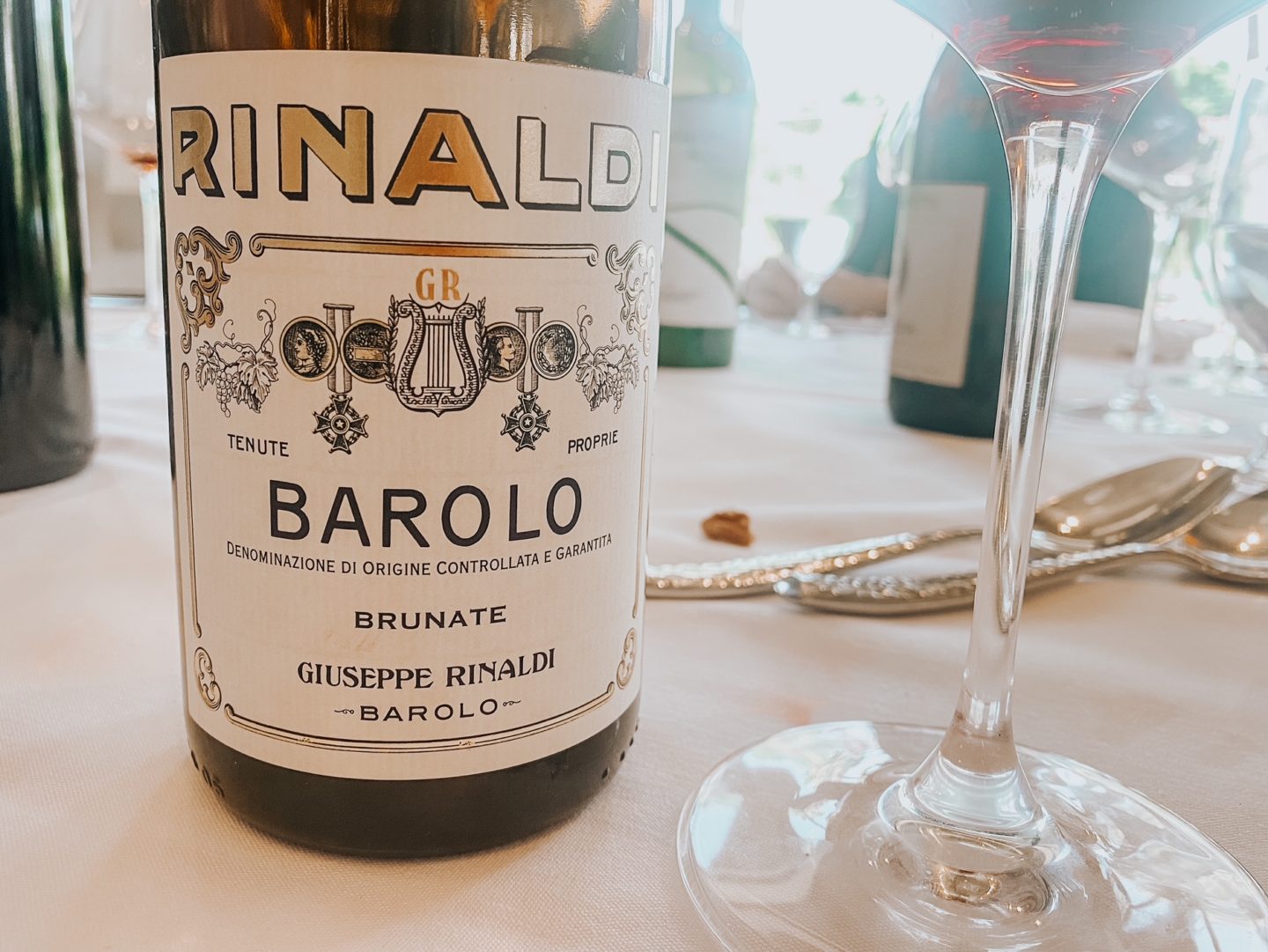
Rinaldi Brunate 2018 O’Clock
After our hard work (ha!) was complete, we were treated to a cheese board, breads, and (delicious, much recommended) pizza at La Masseria. Much more Italian wine flowed. And, as lunch concluded, the headline act emerged from the seemingly never-ending box of wines: Giuseppe Rinaldi Brunate 2018.
This is the new release from the revered traditionalist Barolo producer (if you are not familiar with the traditional/modern divide in Barolo, I recommend this article). It served as a reminder of why I am so fond of this style: incredibly expressive aromatics of orange peel, dried strawberry, rose petals. It also, somehow, manages to perfectly combine intense concentration, powerful tannins and high acidity, and yet feels effortlessly elegant. These are classy wines; a reason why I am increasingly eyeing bottles from Piedmont.
So if anyone can think of a good collective noun for bottles of Barolo, I’d be glad to hear it. And indulge.
Many thanks to Dominic Nocerino who generously supplied more bottles of fine Italian wine than I’ve ever seen on a Saturday morning, and for humbling us with a revealing blind tasting. Bravo to Giancarlo Russo for diligently counting scores (and providing me with a copy to check!) Kudos also to Dominic Pileggi from Vinifera who stoically joined us at the table despite being unable to participate due to an injury; and to the team at La Masseria for cooking up a feast.
Wines by Conte Vistarino are available in Lagniappe, Happy Wine in the Grove, Casa Tua Cucina, and REM Bar (Juno Beach).